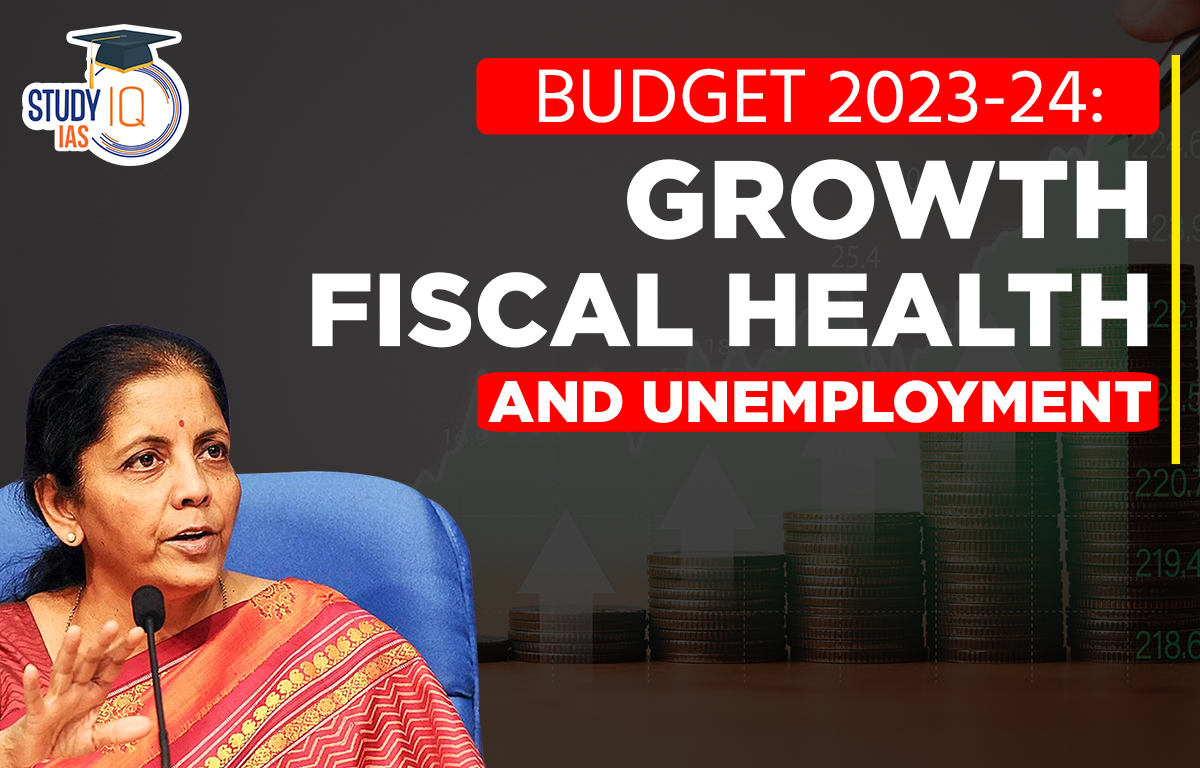Context: The Union Budget for the next financial year (2023-24 or FY24) was tabled in Parliament.
Highlights of Important Economic Data from Budget
Economic Growth
- The Union Budget assumes that India’s nominal GDP will grow by 10.5% in 2023-24.
- Nominal GDP for 2023-2024 has been projected at Rs 301.75 lakh crore.
- Overall market value of the final goods and services produced in India during 2023-24 will be 10.5% higher than the market value of India’s GDP in the current financial year (2022-23).
- Economic Survey for 2022-23 has forecast a real GDP growth rate of 6.5 percent, in a range of 6-6.8 percent, for 2023-2024.
- Nominal GDP is the Gross Domestic Product without any effect of inflation.
- It is expressed in terms of current year prices of goods and services.
- Real GDP is the inflation-adjusted GDP of a country.
- Rate of real GDP growth is significant for real issues such as job creation and poverty reduction.
Deficit in Budget
- Revenue Deficit: Revenue deficit in 2023-24 is targeted at 2.9% of GDP, which is lower than the revised estimate of 4.1% in 2022-23.
- Revenue deficit is the excess of revenue expenditure over revenue receipts.
- It implies that the government needs to borrow funds to meet recurring expenses which may not provide future returns.
- If the government keeps the revenue deficit to zero then all its market borrowings (fiscal deficit) can go towards capital expenditure (or spending that increases the productive capacity of the economy).
- Fiscal Deficit: Fiscal deficit in 2023-24 is targeted at 5.9% of GDP, lower than the revised estimate of 6.4% of GDP in 2022-23.
- It is an indicator of borrowings by the government for financing its expenditure.
- Primary Deficit: Primary deficit is the difference between fiscal deficit and interest payments.
- It is estimated to be 2.3% of GDP in 2023-24.
- FRBM Targets: Fiscal Responsibility and Budget Management (FRBM) Act, 2003 requires the central government to progressively reduce its outstanding debt, revenue deficit and fiscal deficit, and give three year rolling targets.
- Government aims to reduce fiscal deficit to below 4.5% of GDP by 2025-26.
- FRBM targets for deficits (as % of GDP)
| Actuals 2021-22 |
Revised 2022-23 |
Budgeted 2023-24 |
|
| Fiscal Deficit | 6.7% | 6.4% | 5.9% |
| Revenue Deficit | 4.4% | 4.1% | 2.9% |
| Primary Deficit | 3.3% | 3.0% | 2.3% |
Unemployment
- Rate of employment: Employment rate (total number of employed people as a percentage of the working-age population) has had a steady fall from 42.8% in 2016 to 36.5% in 2022.
- Total employment: CMIE data reveals that the total number of employed people in India at the end of December 2022 was lower than the total number of employed people at the start of 2016
- Absolute number of Indians with jobs had gone down by 4 lakh even as the number of Indians in the working-age population had gone up by over 16 crore.
- India’s labour force itself is shrinking as an increasing number of Indians get dismayed from not getting a job and stop demanding work.
Case of MGNREGA
- Low budget allocations lead to delays in payment of wages/ non-payment of wages and that overtime leads to people opting out of demanding work.
- Reduced demand led to further cutting back the budget allocation.


 National Technology Readiness Assessment...
National Technology Readiness Assessment...
 Justice Mission-2025: China’s Live-Fir...
Justice Mission-2025: China’s Live-Fir...
 Suryastra: First Made-in-India Long-Rang...
Suryastra: First Made-in-India Long-Rang...

























